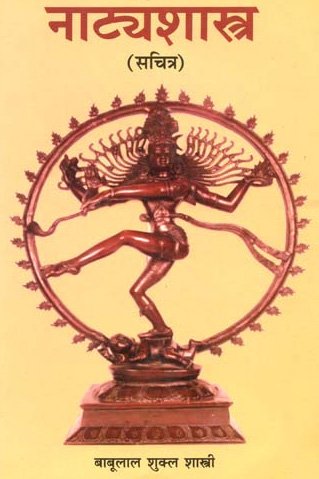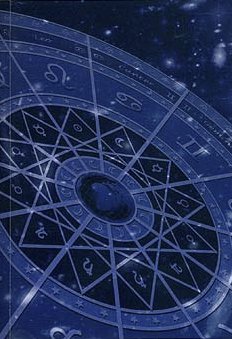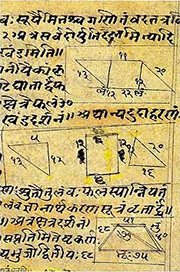Pannaga, Panna-ga, Pannagā: 26 definitions
Introduction:
Pannaga means something in Buddhism, Pali, Hinduism, Sanskrit, Jainism, Prakrit, Marathi, Hindi. If you want to know the exact meaning, history, etymology or English translation of this term then check out the descriptions on this page. Add your comment or reference to a book if you want to contribute to this summary article.
Alternative spellings of this word include Pannag.
In Hinduism
Natyashastra (theatrics and dramaturgy)
Source: Wisdom Library: Nāṭya-śāstraPannaga (पन्नग) is a Sanskrit word referring to a group of deities. Acording to the Nāṭyaśāstra 1.88-94, when Brahmā, Indra and all other gods went to inspect the playhouse (nāṭyamaṇḍapa) designed by Viśvakarmā, he assigned different deities for the protection of the playhouse itself, as well as for the objects relating to dramatic performance (prayoga).
As such, Brahmā assigned the Pannagas, the Guhyakas and the Yaḳṣas underneath the stage (raṅgapīṭha). The protection of the playhouse was enacted because of the jealous Vighnas (malevolent spirits), who began to create terror for the actors.

Natyashastra (नाट्यशास्त्र, nāṭyaśāstra) refers to both the ancient Indian tradition (shastra) of performing arts, (natya—theatrics, drama, dance, music), as well as the name of a Sanskrit work dealing with these subjects. It also teaches the rules for composing Dramatic plays (nataka), construction and performance of Theater, and Poetic works (kavya).
Purana and Itihasa (epic history)
Source: Cologne Digital Sanskrit Dictionaries: The Purana Index1) Pannaga (पन्नग).—A Śrutaṛṣi.*
- * Brahmāṇḍa-purāṇa II. 33. 4.
2) Pannagā (पन्नगा).—Semi-divine beings, see sarpās.*
- * Brahmāṇḍa-purāṇa II. 32. 1, 2.
Pannaga (पन्नग) is a name mentioned in the Mahābhārata (cf. I.35.13, I.60.66) and represents one of the many proper names used for people and places. Note: The Mahābhārata (mentioning Pannaga) is a Sanskrit epic poem consisting of 100,000 ślokas (metrical verses) and is over 2000 years old.

The Purana (पुराण, purāṇas) refers to Sanskrit literature preserving ancient India’s vast cultural history, including historical legends, religious ceremonies, various arts and sciences. The eighteen mahapuranas total over 400,000 shlokas (metrical couplets) and date to at least several centuries BCE.
Ayurveda (science of life)
Toxicology (Study and Treatment of poison)
Source: Shodhganga: Kasyapa Samhita—Text on Visha ChikitsaPannaga (पन्नग) refers to “one who does not move by the feet”, and represents a synonym of Sarpa (“snake”), according to the Paryāyaratnamāla: a lexicon of Āyurveda composed in the 9th Century by Madhava.
Unclassified Ayurveda definitions
Source: gurumukhi.ru: Ayurveda glossary of termsPannaga (पन्नग):—[pannagaḥ] Snakes.

Āyurveda (आयुर्वेद, ayurveda) is a branch of Indian science dealing with medicine, herbalism, taxology, anatomy, surgery, alchemy and related topics. Traditional practice of Āyurveda in ancient India dates back to at least the first millenium BC. Literature is commonly written in Sanskrit using various poetic metres.
Shaktism (Shakta philosophy)
Source: Google Books: ManthanabhairavatantramPannaga (पन्नग) refers to one of the thirty-six sacred trees, according to the Ṣaṭsāhasrasaṃhitā, an expansion of the Kubjikāmatatantra: the earliest popular and most authoritative Tantra of the Kubjikā cult.—Accordingly, “According to the Kula teaching (these) [i.e., Pannaga] are the most excellent Kula trees that give accomplishments and liberation. (They are full of) Yoginīs, Siddhas, Lords of the Heroes and hosts of gods and demons. One should not touch them with one’s feet or urinate and defecate on them or have sex etc. below them. One should not cut etc. or burn them. Having worshipped and praised them regularly with their own flowers and shoots, one should always worship the Śrīkrama with devotion with their best fruits and roots. [...]”.

Shakta (शाक्त, śākta) or Shaktism (śāktism) represents a tradition of Hinduism where the Goddess (Devi) is revered and worshipped. Shakta literature includes a range of scriptures, including various Agamas and Tantras, although its roots may be traced back to the Vedas.
Jyotisha (astronomy and astrology)
Source: Wisdom Library: Brihat Samhita by VarahamihiraPannaga (पन्नग) refers to “serpents”, according to the Bṛhatsaṃhitā (chapter 15) (“On the nakṣatras—‘asterisms’”), an encyclopedic Sanskrit work written by Varāhamihira mainly focusing on the science of ancient Indian astronomy astronomy (Jyotiṣa).—Accordingly, “Those who are born on the lunar day of Puṣya will be dealers in barley, wheat, rice, sugar-canes and in the produce of the forest; will be either ministers or rulers; will live by water; will be Sādhus and will delight in sacrificial rites. Those who are born on the lunar day of Āśleṣā, will be dealers in perfumes, roots, fruits, reptiles, serpents (pannaga) and poison; will delight in cheating others of their property; will be dealers in pod grains and will be skilled in medicine of every sort. [...]”.

Jyotisha (ज्योतिष, jyotiṣa or jyotish) refers to ‘astronomy’ or “Vedic astrology” and represents the fifth of the six Vedangas (additional sciences to be studied along with the Vedas). Jyotisha concerns itself with the study and prediction of the movements of celestial bodies, in order to calculate the auspicious time for rituals and ceremonies.
Ganitashastra (Mathematics and Algebra)
Source: archive.org: Hindu MathematicsPannaga (पन्नग) represents the number 7 (seven) in the “word-numeral system” (bhūtasaṃkhyā), which was used in Sanskrit texts dealing with astronomy, mathematics, metrics, as well as in the dates of inscriptions and manuscripts in ancient Indian literature.—A system of expressing numbers by means of words arranged as in the place-value notation was developed and perfected in India in the early centuries of the Christian era. In this system the numerals [e.g., 7—pannaga] are expressed by names of things, beings or concepts, which, naturally or in accordance with the teaching of the Śāstras, connote numbers.

Ganitashastra (शिल्पशास्त्र, gaṇitaśāstra) refers to the ancient Indian science of mathematics, algebra, number theory, arithmetic, etc. Closely allied with astronomy, both were commonly taught and studied in universities, even since the 1st millennium BCE. Ganita-shastra also includes ritualistic math-books such as the Shulba-sutras.
In Buddhism
Tibetan Buddhism (Vajrayana or tantric Buddhism)
Source: Wisdom Library: Tibetan BuddhismPannaga (पन्नग) is the name of a Garuḍa mentioned as attending the teachings in the 6th century Mañjuśrīmūlakalpa: one of the largest Kriyā Tantras devoted to Mañjuśrī (the Bodhisattva of wisdom) representing an encyclopedia of knowledge primarily concerned with ritualistic elements in Buddhism. The teachings in this text originate from Mañjuśrī and were taught to and by Buddha Śākyamuni in the presence of a large audience (including Pannaga).

Tibetan Buddhism includes schools such as Nyingma, Kadampa, Kagyu and Gelug. Their primary canon of literature is divided in two broad categories: The Kangyur, which consists of Buddha’s words, and the Tengyur, which includes commentaries from various sources. Esotericism and tantra techniques (vajrayāna) are collected indepently.
In Jainism
General definition (in Jainism)
Source: archive.org: Een Kritische Studie Van Svayambhūdeva’s PaümacariuPannaga (पन्नग) participated in the war between Rāma and Rāvaṇa, on the side of the latter, as mentioned in Svayambhūdeva’s Paumacariu (Padmacarita, Paumacariya or Rāmāyaṇapurāṇa) chapter 57ff. Svayambhū or Svayambhūdeva (8th or 9th century) was a Jain householder who probably lived in Karnataka. His work recounts the popular Rāma story as known from the older work Rāmāyaṇa (written by Vālmīki). Various chapters [mentioning Pannaga] are dedicated to the humongous battle whose armies (known as akṣauhiṇīs) consisted of millions of soldiers, horses and elephants, etc.

Jainism is an Indian religion of Dharma whose doctrine revolves around harmlessness (ahimsa) towards every living being. The two major branches (Digambara and Svetambara) of Jainism stimulate self-control (or, shramana, ‘self-reliance’) and spiritual development through a path of peace for the soul to progess to the ultimate goal.
Languages of India and abroad
Pali-English dictionary
Source: BuddhaSasana: Concise Pali-English Dictionarypannaga : (m.) a serpent.
Source: Sutta: The Pali Text Society's Pali-English DictionaryPannaga refers to: a snake Th. 1, 429 (°inda chief of snake-demons); J. V, 166; Miln. 23.
Note: pannaga is a Pali compound consisting of the words panna and ga.

Pali is the language of the Tipiṭaka, which is the sacred canon of Theravāda Buddhism and contains much of the Buddha’s speech. Closeley related to Sanskrit, both languages are used interchangeably between religions.
Marathi-English dictionary
Source: DDSA: The Molesworth Marathi and English Dictionarypannaga (पन्नग).—m S (pat & naga. Going upon feet.) A snake.
Source: DDSA: The Aryabhusan school dictionary, Marathi-Englishpannaga (पन्नग).—m A snake.
Marathi is an Indo-European language having over 70 million native speakers people in (predominantly) Maharashtra India. Marathi, like many other Indo-Aryan languages, evolved from early forms of Prakrit, which itself is a subset of Sanskrit, one of the most ancient languages of the world.
Sanskrit dictionary
Source: DDSA: The practical Sanskrit-English dictionaryPannaga (पन्नग).—See under पद् (pad).
See also (synonyms): panna.
--- OR ---
Pannaga (पन्नग).—a snake, serpent; विप्रकृतः पन्नगः फणां कुरुते (viprakṛtaḥ pannagaḥ phaṇāṃ kurute) Ś.6.31.
-gam lead. °अरिः, °अशनः, °नाशनः (ariḥ, °aśanaḥ, °nāśanaḥ) epithets of Garuḍa.
Derivable forms: pannagaḥ (पन्नगः).
Pannaga is a Sanskrit compound consisting of the terms panna and ga (ग).
Source: Cologne Digital Sanskrit Dictionaries: Shabda-Sagara Sanskrit-English DictionaryPannaga (पन्नग).—m.
(-gaḥ) 1. A snake. 2. A drug: see padmakāṣṭha. f. (-gī) The snake goddess Manasa. n.
(-gaṃ) Lead. E. panna a fallen, ga who goes, or pad a foot, na not, ga who goes,; moving without feet.
Source: Cologne Digital Sanskrit Dictionaries: Benfey Sanskrit-English DictionaryPannaga (पन्नग).—i. e. pad-na-ga, m. 1. A snake, [Nala] 14, 8. 2. A snakeshaped demon.
--- OR ---
Pānnaga (पान्नग).—i. e. pannaga + a, adj. Consisting of snakes, [Harivaṃśa, (ed. Calc.)] 9387.
Source: Cologne Digital Sanskrit Dictionaries: Cappeller Sanskrit-English DictionaryPannaga (पन्नग).—[masculine] ī [feminine] serpent or serpent-demon (cf. [preceding]).
Source: Cologne Digital Sanskrit Dictionaries: Monier-Williams Sanskrit-English Dictionary1) Pannaga (पन्नग):—[=panna-ga] [from panna > pad] m. (ifc. f(ā). ) ‘creeping low’, a serpent or serpent-demon, [Suparṇādhyāya; Mahābhārata] etc.
2) [v.s. ...] Cerasus Puddum, [cf. Lexicographers, esp. such as amarasiṃha, halāyudha, hemacandra, etc.]
3) Pānnaga (पान्नग):—mf(ī)n. ([from] panna-ga) formed or consisting of snakes, having serpents, snaky, [Harivaṃśa]
Source: Cologne Digital Sanskrit Dictionaries: Yates Sanskrit-English DictionaryPannaga (पन्नग):—[panna-ga] (gaḥ) 1. m. A snake; a drug. f. (gī) The snake goddess Manasā.
Source: DDSA: Paia-sadda-mahannavo; a comprehensive Prakrit Hindi dictionary (S)Pannagā (पन्नगा) in the Sanskrit language is related to the Prakrit words: Paṇṇaī, Paṇṇaga, Pannayā.
[Sanskrit to German]
Sanskrit, also spelled संस्कृतम् (saṃskṛtam), is an ancient language of India commonly seen as the grandmother of the Indo-European language family (even English!). Closely allied with Prakrit and Pali, Sanskrit is more exhaustive in both grammar and terms and has the most extensive collection of literature in the world, greatly surpassing its sister-languages Greek and Latin.
Hindi dictionary
Source: DDSA: A practical Hindi-English dictionaryPannaga (पन्नग) [Also spelled pannag]:—(nm) a snake; ~[gāri] lit. enemy of snakes —Garur, the divine eagle, vehicle of Vishnu.
...
Prakrit-English dictionary
Source: DDSA: Paia-sadda-mahannavo; a comprehensive Prakrit Hindi dictionary1) Paṇṇaga (पण्णग) in the Prakrit language is related to the Sanskrit word: Pannaga.
2) Paṇṇaga (पण्णग) also relates to the Sanskrit word: Pannaka.
3) Paṇṇāga (पण्णाग) also relates to the Sanskrit word: Prajña.
Prakrit is an ancient language closely associated with both Pali and Sanskrit. Jain literature is often composed in this language or sub-dialects, such as the Agamas and their commentaries which are written in Ardhamagadhi and Maharashtri Prakrit. The earliest extant texts can be dated to as early as the 4th century BCE although core portions might be older.
Kannada-English dictionary
Source: Alar: Kannada-English corpusPannaga (ಪನ್ನಗ):—
1) [noun] a snake or serpent.
2) [noun] (myth.) the descendents from Kadru, wife of sage Kaśyapa; the lineage of serpents.
3) [noun] (math.) a symbol for the number five.
Kannada is a Dravidian language (as opposed to the Indo-European language family) mainly spoken in the southwestern region of India.
See also (Relevant definitions)
Starts with (+3): Pannagabhojana, Pannagakannike, Pannagakataka, Pannagakesara, Pannagamaya, Pannaganashana, Pannagandha, Pannagapuri, Pannagara, Pannagaraja, Pannagari, Pannagasevya, Pannagashana, Pannagashin, Pannagastra, Pannagavidye, Pannagendra, Pannakacanan, Pannakacayanan, Pannakam.
Ends with: Bahupannaga, Brahmapannaga, Daityapannaga, Kotipannaga, Mandapannaga, Patagapannaga, Sapannaga, Shavapannaga, Vanapannaga, Vipannaga, Vishapannaga.
Full-text (+41): Pannagashana, Pannagamaya, Panna, Pannagaraja, Pannagabhojana, Pannaganashana, Pannagakesara, Pannagapuri, Pannageshvara, Pannagendra, Pannakavairi, Prajna, Pannaka, Pannaya, Pannai, Vanapannaga, Vipannaga, Vishapannaga, Vaikanka, Pannagari.
Relevant text
Search found 26 books and stories containing Pannaga, Panna-ga, Pannagā, Paṇṇagā, Paṇṇaga, Pānnaga, Paṇṇāga; (plurals include: Pannagas, gas, Pannagās, Paṇṇagās, Paṇṇagas, Pānnagas, Paṇṇāgas). You can also click to the full overview containing English textual excerpts. Below are direct links for the most relevant articles:
Bhakti-rasamrta-sindhu (by Śrīla Rūpa Gosvāmī)
Verse 2.1.95 < [Part 1 - Ecstatic Excitants (vibhāva)]
The Practice Manual of Noble Tārā Kurukullā (by Dharmachakra Translation Committee)
Chapter 5 < [Appendix - Sanskrit Text]
Garga Samhita (English) (by Danavir Goswami)
Verse 2.12.20 < [Chapter 12 - Subduing Kāliya and Drinking the Forest Fire]
Verse 2.12.10 < [Chapter 12 - Subduing Kāliya and Drinking the Forest Fire]
Taittiriya Upanishad Bhashya Vartika (by R. Balasubramanian)
The Skanda Purana (by G. V. Tagare)
Chapter 65 - The Greatness of Ānandeśvara (ānanda-īśvara-tīrtha) < [Section 3 - Revā-khaṇḍa]
Chapter 7 - The Advent of Kūrma Kalpa < [Section 3 - Revā-khaṇḍa]
Chapter 59 - The Greatness of Gayā Tīrtha < [Section 1 - Avantīkṣetra-māhātmya]
Animal Kingdom (Tiryak) in Epics (by Saranya P.S)